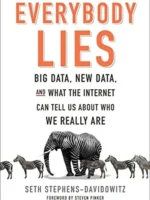Digital Minimalism Review
Digital Minimalism by Cal Newport is a method for reclaiming attention: use tech intentionally, not by default. It combines a philosophy of fewer, better tools with practices for deep work, solitude, and high-quality leisure. The aim is control and clarity, not nostalgia.
Overview
Newport defines digital minimalism, critiques the attention economy, and proposes a 30-day digital declutter. He then rebuilds a stack of habits: scheduled use, conversation over connection, analog hobbies, and regular time alone without inputs.
Summary
Core steps: identify optional digital tools, remove them for 30 days, reintroduce only those that serve clearly defined values with strict operating rules. Replace low-value scrolling with crafts, exercise, reading, and real social time. Protect solitude to think, plan, and reset. Treat notifications and feeds as costs to be justified.
Authors
Cal Newport is a computer science professor who writes about focus and productivity. His tone is prescriptive and systems oriented, with examples from students, professionals, and founders.
Key Themes
Attention as a scarce resource. Solitude as a requirement for depth. High-quality leisure beats passive consumption. Conversation beats click-based engagement. Default settings are policy choices; set your own.
Strengths and Weaknesses
Strengths: clear framework, actionable rules, and strong emphasis on values. Weaknesses: limited empirical depth, prescriptive tone, and less guidance for people whose jobs require constant online presence. Treat it as a reset protocol you can tailor.
Target Audience
Knowledge workers, students, parents, and teams who feel fragmented by feeds and notifications. Useful for managers setting communication norms.
Favorite Ideas
The 30-day declutter as a hard reset. Operating rules for each app. Conversation quotas to replace likes. Leisure portfolios that include skill and community.
Takeaways
Define what matters, cut optional digital noise, and rebuild with strict rules. Schedule solitude and real conversations. Let tools serve values, not the other way around.









